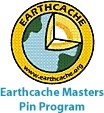
 This EarthCache is paired with San Onofre Breccia – Dana
Point
(GCP80W). Allow enough time to do both the
same day because the logging requirement is to compare the two
different outcrops. You’ll be looking at what a geologic
formation is and what can be inferred about the area based on
the characteristics of the formation.
This EarthCache is paired with San Onofre Breccia – Dana
Point
(GCP80W). Allow enough time to do both the
same day because the logging requirement is to compare the two
different outcrops. You’ll be looking at what a geologic
formation is and what can be inferred about the area based on
the characteristics of the formation.
Exposed in the cliffs of Aliso Point is a section of the San
Onofre Breccia, a 15 to 20 million year old formation. A breccia is
a sedimentary rock composed of angular fragments (clasts) embedded
in a fine-grained matrix (the “glue” that binds the clasts
together). In the San Onofre Breccia, the clasts range in size from
less than an inch to the size of small trucks and are a variety of
rock types, mostly metamorphic.
A formation is a rock that can be easily recognized over a large
area. Let’s see if you can recognize the San Onofre Breccia at Dana
Point based on what you see here. Take written notes or a picture
of the cliff infront of you. A mental picture would be fine, but
you’ll need a good memory as you’ll be sending me a note on
features of the rock that were the same between the two sites to
log the chaches. If you don't get to both caches, just describe
what you saw. Pictures of the rock formation will count as well.
Things to note are the general size and shape of the clasts, the
type of rock each clast is (color patters are fine), the
arrangement of the clasts (are the small ones grouped, same rock
types together?) and the make up of the matrix.
If you went to Dana Point first, the rest of the description is
the same.
Now comes the interpretation of how the area looked 15 to 20
million years ago, based on the characteristis of the San Onofre
Breccia. The shape and size of the clasts in the breccia indicate
that the source of the rocks that make up the San Onofre Breccia
was nearby and steep. Large clasts can not be transported very far
from the cliff from which they broke off since they are so heavy.
The angularity (how sharp the edges are) of the clasts also show
that the rock pieces did not move very far or their edges would
have been smoothed by rolling and knocking up against each other.
Over the entire range of the San Onofre Breccia, the size of the
clasts do not stay the same, but get smaller as you go inland.
Since smaller clasts are transported further from their source than
larger ones, it can be assumed that the source of the San Onofre
Breccia was off-shore. The clasts that make up the San Onofre
Breccia include a wide variety of rock types showing that the
source of the rocks was also varied. The characteristics of the San
Onofre Breccia suggest that there was a tall steep mountain
composed of a variety of rock types right off-shore 15 to 20
million years ago. Obviously, there is not a steep mountain there
now, nor is there a submerged remnant of an eroded mountain. So
where did the mountain go? There is evidence that a fault exists
just off-shore. This fault may have been the one that forced a
mountain up in the first place. Rocks similar to clasts in the San
Onofre Breccia are present on the Channel Islands, so it can be
assumed that they exist elsewhere beneath the sea floor of the
coast. Then movement on the fault either fully submerged it again
or moved the mountain up the coast, possibly becoming the Palos
Verdes Hills. (Most faults in Southern California move in a right
lateral direction. That means as you watch the rocks on the other
side of the fault they will always move to the right. In this case,
looking out to the ocean, a hypothetical island will move north up
the coast). If it seems unlikely that a fault could move a mountain
the size of the Palos Verdes Hills the approximately 45 miles from
Dana Point to Palos Verdes, remember that there has been about 15
to 20 million years since the San Onofre Breccia was formed, and
other faults in California have moved even farther in the same
time-frame.
Logging Requirement: Send me a note with
- The text "GCP805 San Onofre Breccia – Aliso Point Earthcache"
on the first line
- The number of people in your group.
- the features of the rock that were the same between the two
sites. If you don't get to both caches in the same day you will
need to go back another day.
The following sources were used to generate this
cache.
- Geology Underfoot in Southern California,
Robert P. Sharp and Allen Glazner, Mountain Press Publishing
Company, 1993
- Stuart, C. J., 1979, Lithofacies and origin of
the San Onofre Breccia, coastal southern California, in Stuart, C.
J., ed., Miocene lithofacies and depositional environments, coastal
southern California and northwestern Baja California: Pacific
Section, Society of Economic Paleontologists and Mineralogists, p.
25-42.
- Woodford, A.O., 1928, Northwestward
continuation of the San Onofre Breccia: University of California
Publications Bulletin, Department of Geological Sciences, v. 17, n.
5, p. 187-191.
- Woodford, A.O., 1925, The San Onofre Breccia:
University of California Publications Bulletin, Department of
Geological Sciences, v. 15, n. 7, p. 159-280